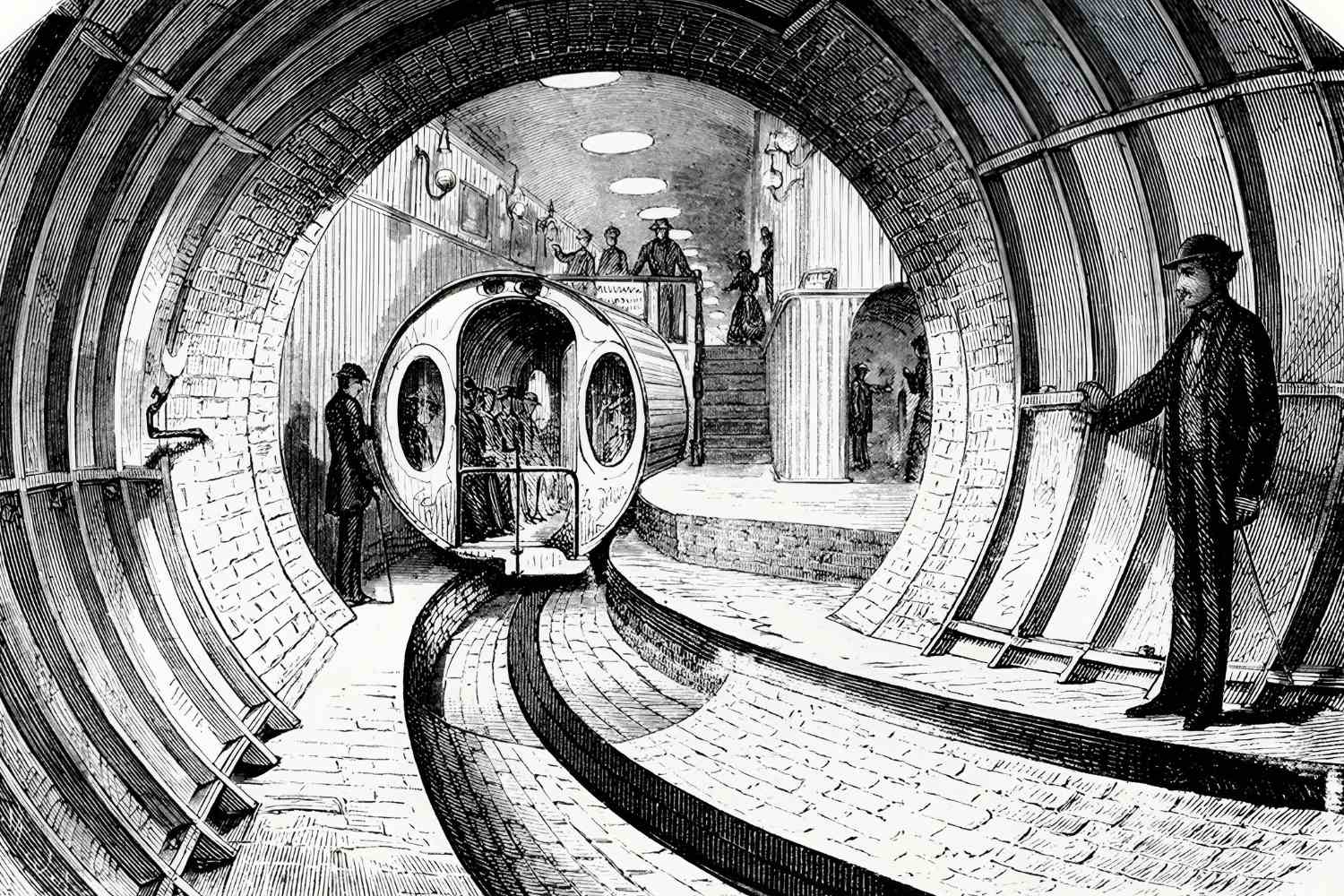Lost Underground Pneumatic Subway Of New York: Forgotten Vacuum Tube Transport

Ever heard of the pneumatic subway in New York? This forgotten piece of history once promised a futuristic way to travel beneath the bustling streets. Built in the 1870s, the vacuum tube transport system was an ambitious project aimed at revolutionizing urban transit. Imagine being whisked away in a tube, avoiding traffic and noise. Though it never fully took off, remnants of this underground marvel still exist today. Curious about how it worked and why it failed? Let’s dig into the story of New York’s lost pneumatic subway and uncover the secrets buried beneath the city.
The Birth of the Pneumatic Subway
In the late 19th century, New York City witnessed an ambitious project that aimed to revolutionize urban transport. The pneumatic subway was a marvel of engineering, using air pressure to propel carriages through underground tunnels. Though it never reached full-scale operation, remnants of this forgotten system still exist.
Beach Pneumatic Transit
The first and only operational pneumatic subway in New York was the brainchild of Alfred Ely Beach. This short-lived marvel was a glimpse into what could have been a futuristic mode of transport.
City Hall Station: Located beneath Broadway, this station was the starting point of Beach's pneumatic subway. It featured a luxurious waiting room with chandeliers and a grand piano, offering a stark contrast to the bustling streets above.
Tunnel Entrance: The entrance to the tunnel was cleverly disguised as a store selling newspapers and books. This hidden gateway led to a 312-foot-long tunnel, where passengers experienced a smooth, air-powered ride.
The Technology Behind It
Understanding the mechanics of the pneumatic subway helps appreciate its ingenuity. The system relied on air pressure to move the carriages, a concept that was ahead of its time.
Air Pumping Station: Located near the tunnel, this station housed the massive fans and machinery needed to create the air pressure. These powerful pumps could propel the carriage at speeds up to 10 mph, a remarkable feat for the era.
Carriage Design: The carriages were designed to be airtight, ensuring that the air pressure could effectively push them through the tunnel. They were also equipped with plush seating, making the ride comfortable for passengers.
The Demise of the Pneumatic Subway
Despite its innovative design, the pneumatic subway faced numerous challenges that ultimately led to its downfall. Financial difficulties and political opposition were significant hurdles.
Funding Issues: The project struggled to secure the necessary funding for expansion. Investors were hesitant to pour money into an unproven technology, leading to financial strain.
Political Opposition: Powerful figures in New York's political landscape opposed the project, fearing it would disrupt existing transportation monopolies. This resistance made it difficult for Beach to gain the necessary approvals for expansion.
Legacy and Rediscovery
Though the pneumatic subway was short-lived, its legacy lives on. Modern-day explorers and historians have uncovered remnants of this forgotten system, offering a glimpse into New York's innovative past.
Rediscovered Tunnels: Urban explorers have found sections of the original tunnel, hidden beneath the city's streets. These discoveries have sparked renewed interest in the pneumatic subway and its potential impact on urban transport.
Museum Exhibits: Artifacts from the pneumatic subway, including original carriages and machinery, are now displayed in museums. These exhibits educate the public about this fascinating chapter in New York's history.
Modern-Day Inspirations
The concept of pneumatic transport has inspired modern innovations. Engineers and designers continue to explore the potential of air-powered systems for urban mobility.
Hyperloop: Elon Musk's Hyperloop concept draws inspiration from the pneumatic subway. This modern take on air-powered transport aims to achieve high-speed travel through low-pressure tubes, echoing Beach's original vision.
Vacuum Tube Transport: Researchers are developing advanced vacuum tube transport systems that could revolutionize urban mobility. These systems promise faster, more efficient travel, building on the principles of the pneumatic subway.
The lost underground pneumatic subway of New York remains a testament to human ingenuity and ambition. Though it never reached its full potential, its legacy continues to inspire and captivate those who dream of innovative urban transport solutions.
The Legacy of New York's Pneumatic Subway
New York's pneumatic subway remains a fascinating chapter in the city's transit history. Though it was short-lived, the idea of using vacuum tube transport was ahead of its time. This innovative system showed the potential for alternative transportation methods long before modern advancements. The remnants of this forgotten subway still capture the imagination of history buffs and urban explorers alike.
Today, the story of the pneumatic subway serves as a reminder of the city's constant evolution and willingness to experiment with new ideas. It also highlights the importance of preserving historical sites, even those that didn't achieve lasting success. As we continue to seek efficient and sustainable transportation solutions, the legacy of New York's pneumatic subway offers valuable lessons and inspiration for future innovations.

